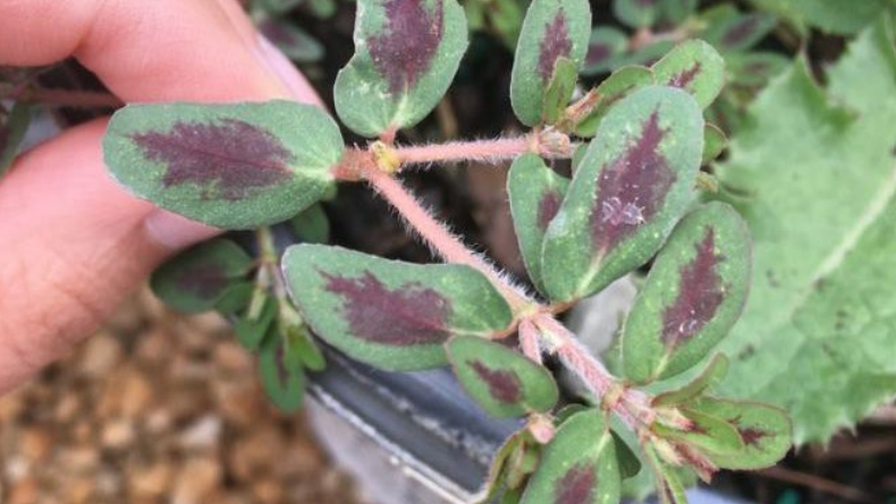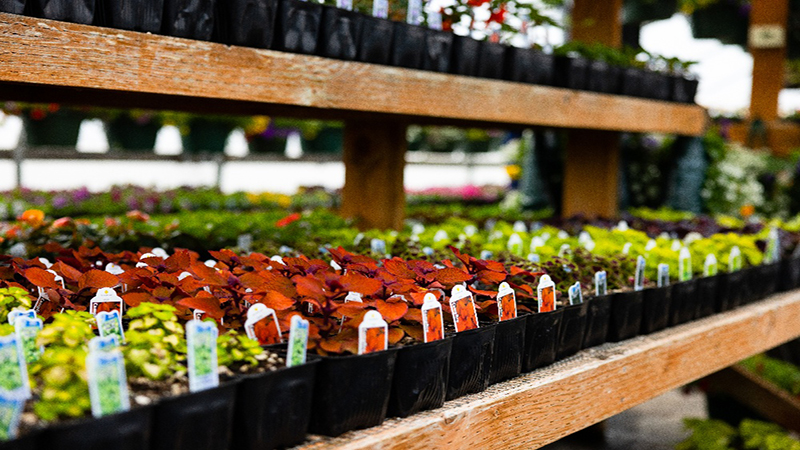Managing Spotted Spurge in the Greenhouse

Reddish stems of spotted spurge with fine hairs, having opposite leaves with a purple spot along the middle vein. Photo: Debalina Saha, MSU Horticulture
Chamaesyce maculata or Euphorbia maculata, also known as spotted spurge or spotted sandmat, is a common broadleaf weed in nursery containers, landscapes, greenhouses, gardens, and lawns. It is a summer annual, low-growing, prostrate weed in the plant family Euphorbiaceae, having spotted leaves. Spotted spurge is native to North America and is widely distributed throughout the U.S.
A recent e-GRO alert can help growers to identify spotted spurge, understand its biology, and develop strategies for its management.
Spotted spurge occurs in a wide range of habitats including vegetable production fields, lawns, citrus, ornamental beds, gardens, container nurseries, and greenhouses. It proliferates well in sunny conditions and occurs in a variety of soils.
Spotted spurge is a herbaceous, low-growing, mat forming summer annual, emerging in early to mid- summer. It has small (less than 0.5 inches long) linear or egg-shaped leaves arranged in opposite pairs. It has a prostrate growth habit with stems growing up to 2 feet and not more than a few inches high. There is often a dark spot in the center of leaf. Individual plants tend to form a mat, along the soil surface, with branches growing outwards from a central growth point in roughly radial patterns.
Seeds of spotted spurge germinate in warm soils at temperatures more than 75°F but may also germinate in cooler temperatures when moisture is available. Light is required for seed germination. Seedlings are green or reddish in color. Plants grow and develop slowly and become noticeable only in mid or late summer. Stems originate from the central growth point and develop mostly radially spreading like a circular mat. Short stems have scale-like appendages or stipules at their base.
Plants form tap root at the central growth point, which can extend up to 24 inches in the soil. Stems do not form roots at nodes.
Continue reading at e-gro.org.









